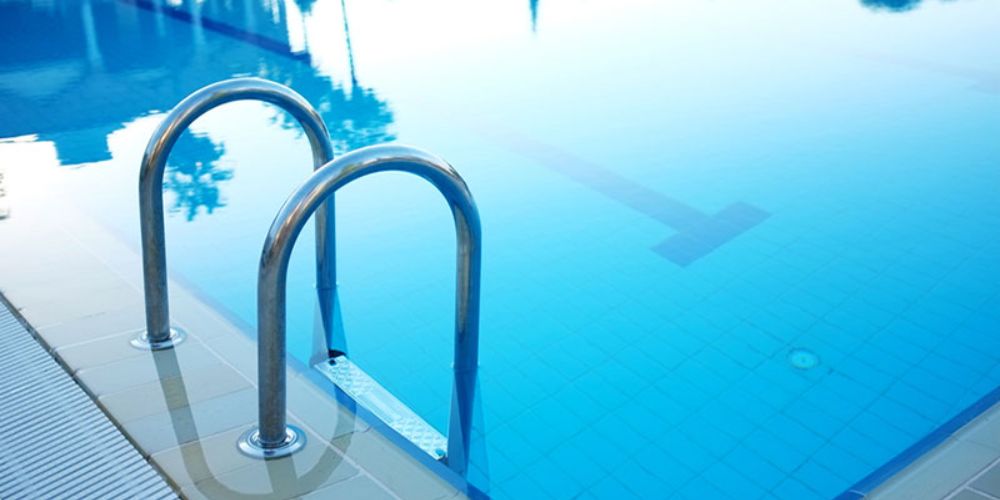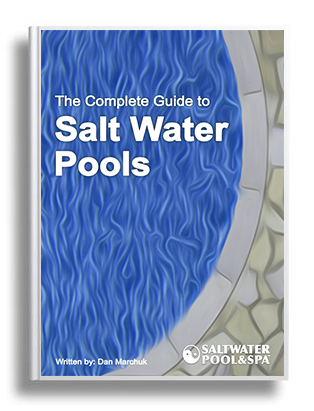- Salt Water Pool and Spa
- Salt Water Pool Maintenance
- Super Chlorinate
Super Chlorinate
The super chlorinate or superchlorination function is the process of temporarily increasing the free chlorine levels in the pool for the purpose of increased sanitation power. It's often necessary when the pool water is cloudy, the pool is being used by a higher number of swimmers than usual or during times of significant rain that has caused the free chlorine levels to fall below optimum levels.

If you are a salt water pool owner you've maybe seen the superchlorinate button on your chlorine generator and wondered what it does exactly and how often you should use it. We'll explain what happens when you press the button, go over how often you should be using it and explain the similarity and differences between super chlorination and shocking. Be sure to check out our salt water pool maintenance guide that breaks down steps daily, weekly and monthly.
The Complete Guide to Salt Water Pool MaintenanceEverything you need to know to maintain your salt water pool and keep it running smoothly all season. |
|
The Super Chlorinate Button
The superchlorinate button on a chlorine generator simply sets the chlorine output to 100% for a period of time, usually 24 hours or until the system is powered off. It's not quite that simple though because every generator has a maximum amount of chlorine it will produce in a 24 hour period.
Superchlorinating your pool is one of the most important and under-used benefits of owning a salt water pool. It gives you the ability to increase the chlorine production without the need to purchase chlorine or a shock treatment and allowing your pool system to do the work. It comes in really handy when clearing up cloudy pool water and keeps your pool sanitary during the busy summer months.
The chlorine generator size in relation to your pool is a huge factor in how effective the superchlorination feature will be at raising the free chlorine in the water and clearing up cloudy water or mild algae. If your salt water system is sized properly you should be operating your chlorine output anywhere between 10 - 40%. If your generator is undersized and you are already operating at 50 - 80% chlorine output you may find that simply boosting the output to 100% may not have the desired effect, and may require a pool shock.
The pump and filter system should be allowed to run for at least 24 hours after the superchlorination process has been initiated.
How Often Should I Super Chlorinate?
The superchlorination booster feature is designed to be used when you need a temporary and gradual increase of free chlorine. This might be to combat increased harmful microorganisms that have been introduced to the pool water or it may also be needed when the water has been diluted due to heavy rainfall or after adding fresh water.
The following are common reasons when superchlorination will likely be beneficial:
- High bather load
- Heavy rainfall
- Cloudy water
- Algae
Can I use the Super Chlorinate feature too much?
The simple answer is no because it's a temporary increase in chlorine that should keep harmful bacteria under control. The free chlorine levels should drop back to normal operating levels once the process is complete. There are a couple concerns if you do find that your free chlorine levels are consistently low. The first thing to keep in mind is the salt cell inside the chlorine generator has a shelf life and similar to a light bulb, the more it's used the faster it will wear out.
The second concern is that if you are frequently needing to superchlorinate, your pool water chemistry may be imbalanced and need attention. It's important to stay on top of your pool maintenance program especially if you are experiencing consistently low chlorine, cloudy water or algae. Finally, you may need to increase the output on your chlorine generator or the system may be undersized for the gallonage of your specific pool.
Super Chlorinate vs Shock
Superchlorination and shocking are very similar because they both raise the levels of free chlorine, but they technically aren't the same. A pool shock raises the chlorine levels almost instantly to breakpoint chlorination, a very high level that's designed to eliminate chloramines and other harmful microorganisms. The superchlorinate feature raises chlorine levels gradually and at a lower concentration, especially if your generator is already operating at 50% or higher of it's maximum output.
HTH Super Shock Treatment for Salt Water Pools 12 PackIf you click on this link and make a purchase, we may earn a commission. |
How do I know whether to Shock or Superchlorinate?
The super chlorinate button should be used occasionally for the reasons mentioned above every couple weeks or as necessary. If you find that your chloramine levels have risen substantially and increasing the chlorine output on the generator isn't solving the problem, it might be a good idea to shock the water.
The idea of a shock is a quick fix to give the chlorine and generator a boost to get back on top of the germ-fighting game. You will find that once you have truly shocked your pool to breakpoint chlorination, the generator will keep things running smoothly at the correct chlorine output. We often recommend a pool shock during springtime pool opening just for this reason.
Disclaimer
Please use all appropriate and proper safety precautions when attempting projects on this website. All projects are attempted at the reader's own risk.
Salt Water Pool and Spa™ participates in the Amazon Services LLC Associates Program, as an Amazon Associate we may earn a commission from qualifying purchases.

